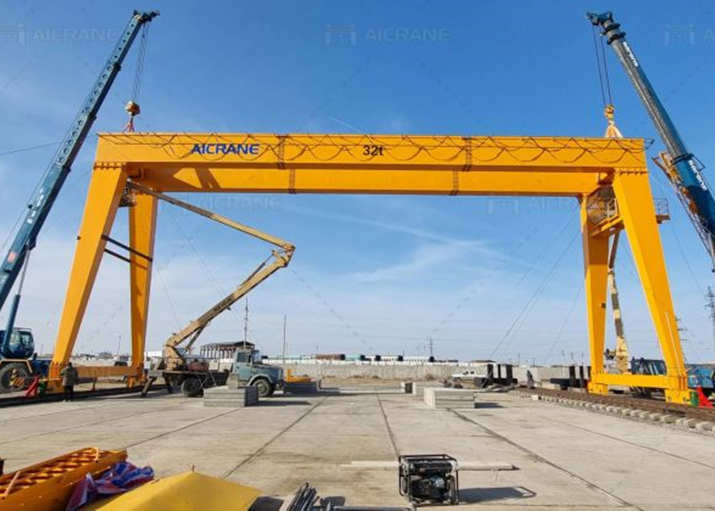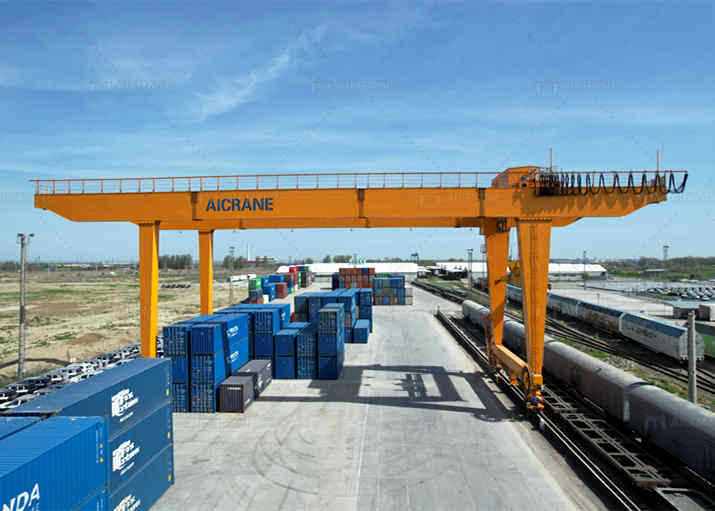When looking for a container crane for sale, one of the best opportunities is to attend industry exhibitions. These events bring together manufacturers, suppliers, and potential buyers, providing a unique platform to examine cranes firsthand, engage with experts, and compare different models and suppliers. Choosing the right container crane is crucial for optimizing operations in container ports, terminals, or other logistics facilities, and exhibitions offer an ideal environment to make an informed decision. However, to maximize your experience and ensure you choose the best crane for your needs, there are several key steps to follow when attending these exhibitions.

Research the Exhibition and Its Participants
Before attending an exhibition, it’s essential to do thorough research about the event and its participants. Different exhibitions focus on various sectors, and some might be more focused on container cranes, while others cover a broader range of equipment.
Understand the Focus of the Exhibition: Make sure the exhibition you are attending features a good number of container crane manufacturers and suppliers. Many large international trade shows will host manufacturers of container cranes, such as ship-to-shore cranes, rail-mounted gantry cranes, and rubber tyred gantry cranes, while some events may focus on port equipment or heavy industrial machinery.
Research Participating Brands: Take the time to research the exhibitors attending the exhibition. Look for leading brands and manufacturers known for producing high-quality container cranes. Check their websites, read customer reviews, and gather information about their product offerings, so you know what to expect when you visit their booths.
Review Past Exhibitions: If you’re attending an exhibition for the first time, it can be helpful to look at past event reviews and details of the products presented. This will give you a better idea of the quality of exhibitors and the types of equipment that are typically showcased.
Prepare Your Requirements
When shopping for a container crane, it’s essential to have a clear understanding of your operational needs. This clarity will help you focus your efforts on the right type of equipment and make it easier to find the perfect container gantry crane for sale.
Capacity Requirements: Determine the lifting capacity required for your operation. Container cranes come in various sizes, and their lifting capacity is a crucial factor in determining which crane will best serve your needs. Consider the maximum weight of containers you need to handle and any specific environmental or operational conditions that might affect crane capacity, such as wind, height restrictions, or dock size.
Reach and Height Specifications: Consider the reach of the crane, which is the maximum horizontal distance it can extend. This is important for unloading containers from large vessels or stacking containers in different rows. Also, think about the height under the crane’s boom to ensure that it can reach containers placed on various deck levels.
Port or Terminal Layout: Understand the layout of the terminal where the crane will be used. The dimensions and space availability will affect your decision between different types of cranes, such as ship-to-shore cranes, RTGs, and RMG cranes.
Power and Energy Requirements: Container cranes are powered in different ways, such as electric, diesel, or hybrid systems. Consider which energy source would be most effective for your operations in terms of costs, environmental impact, and operational efficiency.

Engage with the Manufacturers and Suppliers
Once you’re at the exhibition, the next step is to engage with the manufacturers and suppliers like Aicrane at the booths. The exhibition provides a great opportunity for direct interaction with the sales and technical teams of the companies showcasing their container crane for sale.
Ask Detailed Questions: Make sure to ask specific questions about the cranes on display. Find out about their specifications, capabilities, and any advanced features they offer. Manufacturers may provide detailed brochures or product catalogs, but asking questions in person allows you to get real-time answers and clarifications.
Examples of questions to ask include:
What is the crane’s rated lifting capacity and maximum load?
Can it handle the types of containers used in your terminal?
What safety features are included?
How does the crane perform in extreme weather conditions (e.g., high winds, rain)?
Is there an option for remote control or automation features?
Request Demonstrations: Some exhibitors may provide demonstrations of their cranes in action or virtual simulations to show how the equipment works. Make sure to ask if such demonstrations are available and, if so, participate in them to get a better understanding of how the crane operates.
Evaluate the Customer Service and Support: Ask about the supplier’s customer service capabilities, including the availability of spare parts, maintenance support, and after-sales service. A reputable supplier should offer excellent support throughout the crane’s operational lifespan.
Discuss Lead Times and Delivery Options: Be sure to ask about lead times for manufacturing, delivery, and installation. Container cranes often have long production timelines due to their complexity, so it’s essential to have realistic expectations regarding the time frame for receiving your crane.
Compare Different Models and Features
Exhibitions provide the chance to compare various container cranes side by side. This direct comparison is incredibly valuable in helping you evaluate the best options for your operation.
Look for Key Differentiators: Take the time to compare different container crane for sale models. Consider factors like crane capacity, reach, lifting speed, and energy consumption. Additionally, examine features such as automation, advanced safety features, ease of operation, and maintenance requirements.
Weigh Cost vs. Features: Evaluate the pricing of the cranes on display relative to the features they offer. While it’s tempting to go for the lowest price, sometimes spending a little more upfront for a more efficient crane with additional features could save you money in the long run.
Customization Options: Ask the suppliers about customization options, especially if your operation has unique requirements. Some manufacturers may offer custom modifications, such as tailored lifting mechanisms, control systems, or energy-saving solutions, to suit specific needs.
Negotiate the Price
Once you’ve narrowed down your options, it’s time to start negotiating the price. Exhibitions are often an ideal place for negotiation, as suppliers may offer special discounts or promotional deals during these events.
Request a Quote: After discussing the details and inspecting the crane, request a formal price quote. This will give you a better idea of the total cost of ownership, including installation, training, warranties, and other fees.
Ask About Special Exhibition Discounts: Many suppliers offer discounts and promotions during exhibitions. Inquire about any event-specific offers or packages, such as price reductions for purchasing on-site or discounted service packages.
Discuss Payment and Financing Options: Ensure that you understand the payment terms, including any financing options, down payments, or installment plans available. Some suppliers may offer flexible payment terms, which could help ease your budget.
Review the Contract Terms
After negotiating the price and terms, carefully review the contract before finalizing the deal. Ensure that all details, including the crane specifications, delivery times, maintenance packages, and any warranties, are clearly outlined in the agreement.
Ensure Clarity on Warranties and Support: Double-check that the warranty terms and after-sales support are comprehensive and clear. Some suppliers may offer longer warranty periods or extended maintenance packages, which could provide additional value.
Confirm Delivery and Installation: Verify the delivery and installation schedule. Cranes are large and complex machines, so ensure that the supplier can meet your operational timelines and that they will handle the installation and setup.
Clarify Costs: Be sure that all costs, including shipping, training, and any extra services, are clearly laid out and included in the contract price.
Follow Up Post-Exhibition
Even after the exhibition ends, continue to follow up with the suppliers you’ve engaged with. This is a critical part of the process, especially if you need to get final clarifications or adjust specifications.
Confirm the Deal: If you’ve decided on a particular crane, follow up to confirm the terms of the deal. Keep the communication lines open to ensure that everything is on track.
Request References or Case Studies: If necessary, ask the supplier for references or case studies from other clients who have used their container cranes. This will help validate the reliability and performance of the equipment.
Attending an exhibition to find a container crane for sale is a fantastic opportunity to engage directly with suppliers, compare products, and make an informed purchasing decision. By preparing ahead of time, conducting in-depth research, and effectively negotiating, you can secure a suitable crane that meets your needs and fits within your budget. Remember to focus on key factors such as capacity, reach, energy consumption, and customer support to ensure that you’re making a smart investment for your operations.
